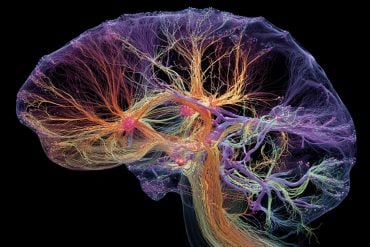Summary: Researchers developed an AI model that can identify the emotional states of tennis players with high accuracy by analyzing their body language during matches. The AI, trained on real-life footage, can detect positive and negative emotions, although it’s more adept at recognizing negative ones. This technology has potential applications in sports training, healthcare, and other fields, but raises ethical concerns about privacy and data misuse.
Key Facts:
- AI model accurately identifies tennis players’ emotions based on body language.
- Both AI and humans are better at recognizing negative emotions.
- Potential applications in sports, healthcare, etc., but ethical concerns need addressing.
Source: KIT
For their study, “Recognizing affective states from the expressive behavior of tennis players using convolutional neural networks,” sports sciences, software development and computer science researchers from KIT and the University of Duisburg-Essen developed a special AI model.
They used pattern-recognition programs to analyze video of tennis players recorded during actual games.
Success Rate of 68.9 Percent
“Our model can identify affective states with an accuracy of up to 68.9 percent, which is comparable and sometimes even superior to assessments made by both human observers and earlier automated methods,” said Professor Darko Jekauc of KIT’s Institute of Sports and Sports Science.

An important and unique feature of the study is the project team’s use of real-life scenes instead of simulated or contrived situations to train their AI system. The researchers recorded video sequences of 15 tennis players in a specific setting, focusing on the body language displayed when a point was won or lost.
The videos showed players with cues including lowered head, arms raised in exultation, hanging racket, or differences in walking speed; these cues could be used to identify the players’ affective states.
After being fed with this data, the AI learned to associate the body language signals with different affective reactions and to determine whether a point had been won (positive body language) or lost (negative body language).
“Training in natural contexts is a significant advance for the identification of real emotional states, and it makes predictions possible in real scenarios,” said Jekauc.
Humans and Machines Recognize Negative Emotions Better Than Positive Ones
Not only does the research show that AI algorithms may be able to surpass human observers in their ability to identify emotions in the future, it also revealed a further interesting aspect: both humans and AI are better at recognizing negative emotions.
“The reason could be that negative emotions are easier to identify because they’re expressed in more obvious ways,” said Jekauc.
“Psychological theories suggest that people are evolutionarily better adapted to perceive negative emotional expressions, for example because defusing conflict situations quickly is essential to social cohesion.”
Ethical Aspects Need Clarification Before Use
The study envisions a number of sports applications for reliable emotion recognition, such as improving training methods, team dynamics and performance, and preventing burnout. Other fields, including healthcare, education, customer service and automotive safety, could also benefit from reliable early detection of emotional states.
“Although this technology offers the prospect of significant benefits, the potential risks associated with it also have to be taken into account, especially those relating to privacy and misuse of data,” Jekauc said.
“Our study adhered strictly to existing ethical guidelines and data protection regulations. And with a view to future applications of such technology in practice, it will be essential to clarify ethical and legal issues ahead of time.”
About this AI and emotion research news
Author: Margarete Lehné
Source: KIT
Contact: Margarete Lehné – KIT
Image: The image is credited to Neuroscience News
Original Research: Open access.
“Recognizing affective states from the expressive behavior of tennis players using convolutional neural networks” by Justus Hartlieb et al. Knowledge-Based Systems
Abstract
Recognizing affective states from the expressive behavior of tennis players using convolutional neural networks
This study describes an AI model by leveraging advanced Convolutional Neural Networks (CNNs) to recognize affective states in real-world sports settings, particularly tennis matches.
In contrast to prior studies that primarily utilized data acquired from actors and rudimentary statistical methods, the present research emphasizes the analysis of bodily expressions in real-life contexts, aiming for a more naturalistic representation of human emotions.
Our CNN-based models demonstrate an accuracy rate of up to 68.9 %, outperforming or matching human observers in many instances. Intriguingly, both the machine learning models and human observers exhibited a shared propensity to more effectively identify negative affective states, which may be attributed to the more intense and straightforward expression of these states.
These results not only advance the state of the art in affective state recognition but also pave the way for broader applications, including in healthcare and automotive safety sectors, thereby constituting a significant advancement in the development of sophisticated and universally applicable emotional recognition systems.






